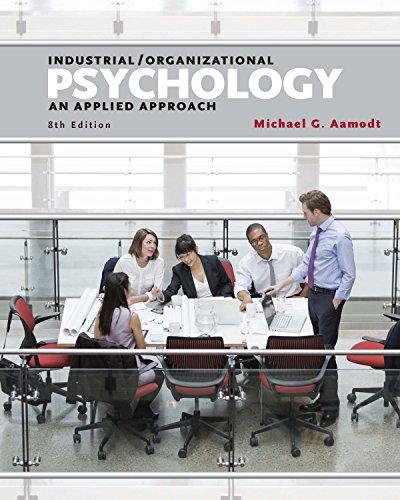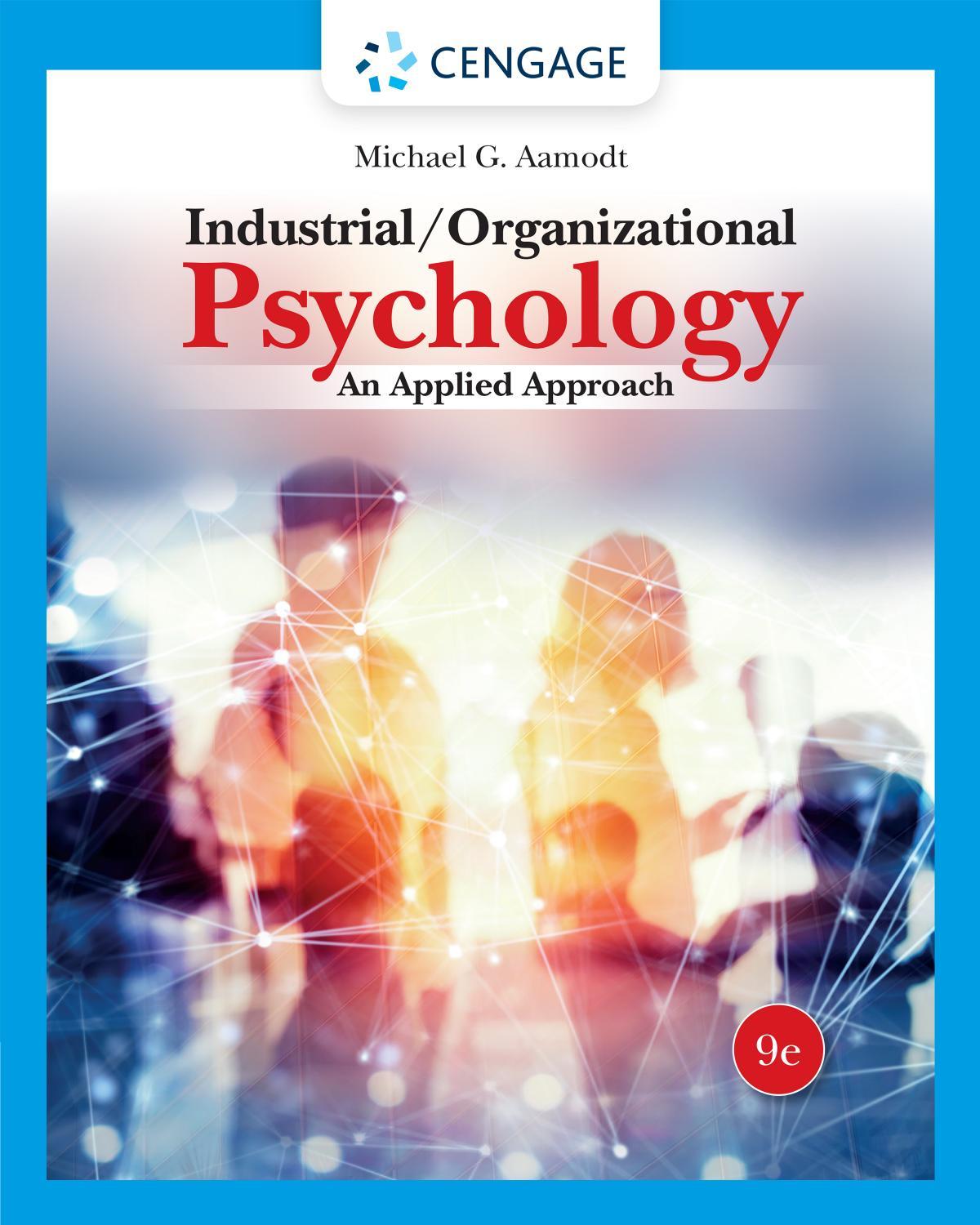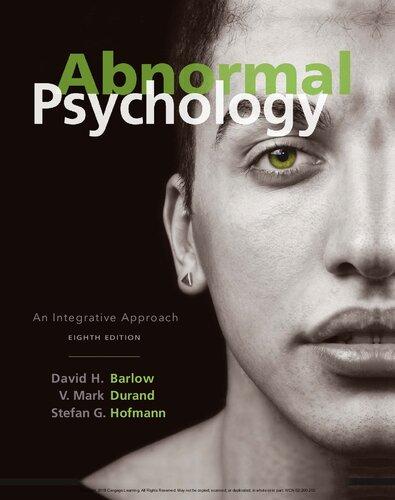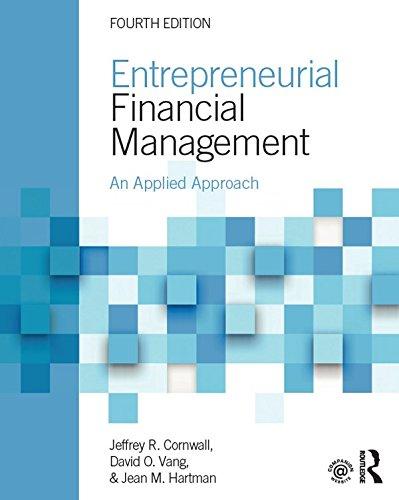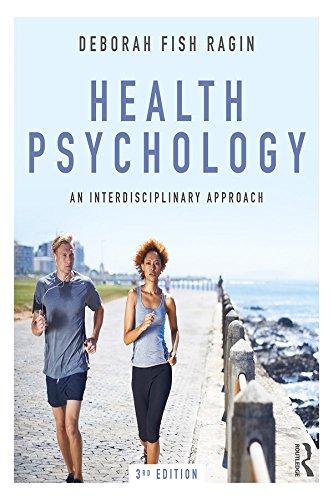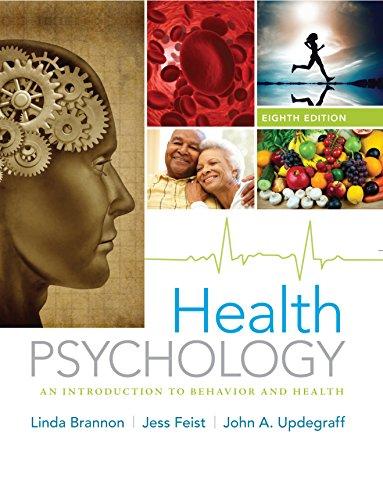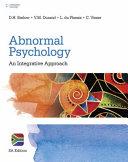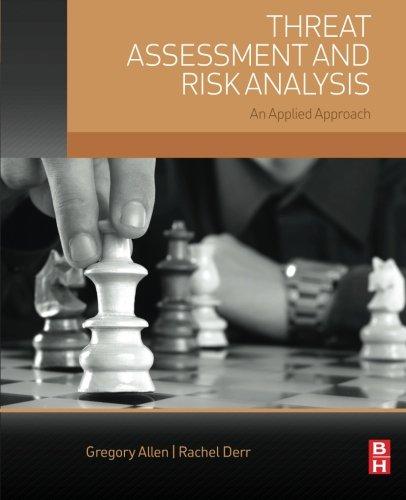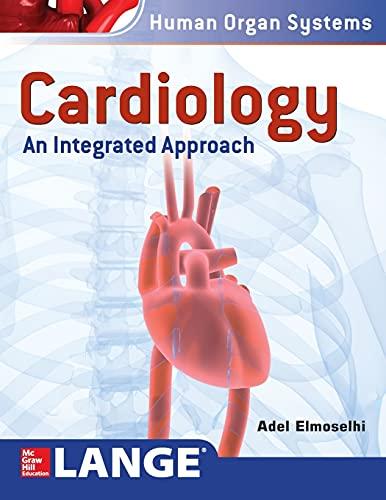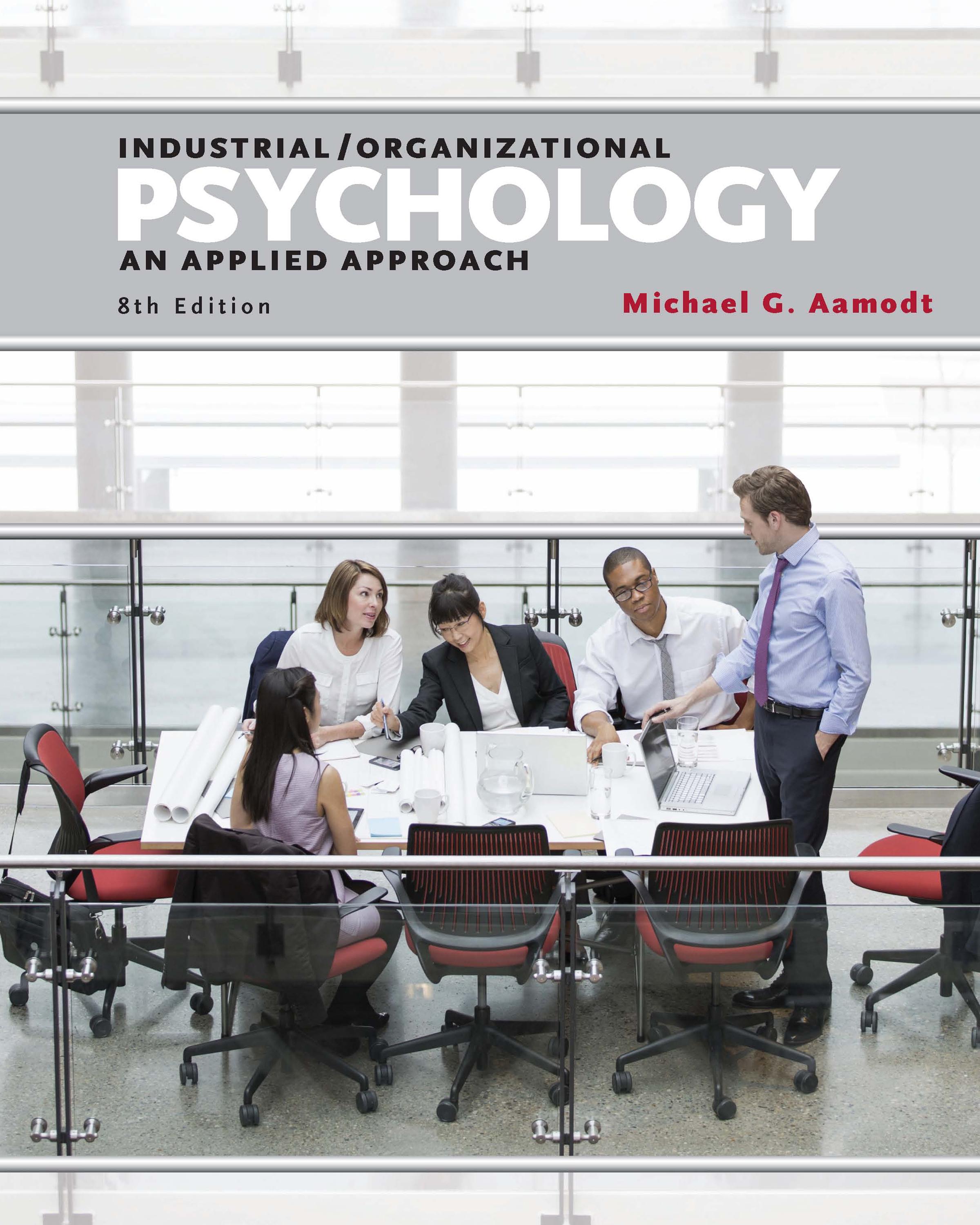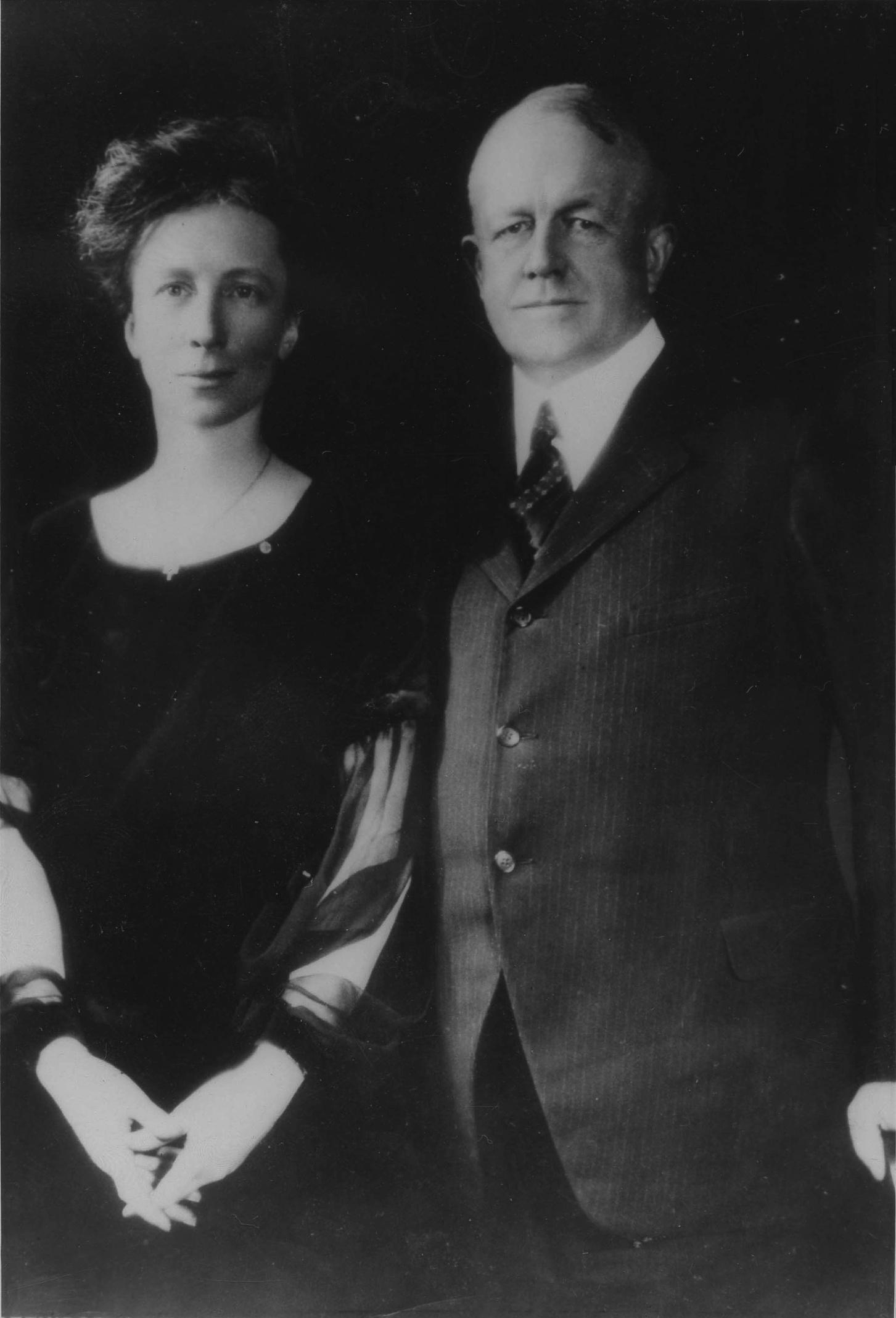Industrial/Organizational Psychology:
An Applied Approach 8th Edition, (Ebook PDF) Visit to download the full and correct content document: https://ebookmass.com/product/industrial-organizational-psychology-an-applied-appro ach-8th-edition-ebook-pdf/
More products digital (pdf, epub, mobi) instant download maybe you interests ...
Industrial/Organizational Psychology: An Applied Approach, 9e 9th Edition Michael G. Aamodt
https://ebookmass.com/product/industrial-organizationalpsychology-an-applied-approach-9e-9th-edition-michael-g-aamodt/
Nutrition: An Applied Approach 4th Edition, (Ebook PDF)
https://ebookmass.com/product/nutrition-an-applied-approach-4thedition-ebook-pdf/
Abnormal Psychology: An Integrative Approach 8th Edition David H. Barlow
https://ebookmass.com/product/abnormal-psychology-an-integrativeapproach-8th-edition-david-h-barlow/
Entrepreneurial Financial Management: An Applied Approach 4th Edition, (Ebook PDF)
https://ebookmass.com/product/entrepreneurial-financialmanagement-an-applied-approach-4th-edition-ebook-pdf/
Health Psychology: An Interdisciplinary Approach 3rd Edition, (Ebook PDF)
https://ebookmass.com/product/health-psychology-aninterdisciplinary-approach-3rd-edition-ebook-pdf/
Health Psychology: An Introduction to Behavior and Health 8th Edition, (Ebook PDF)
https://ebookmass.com/product/health-psychology-an-introductionto-behavior-and-health-8th-edition-ebook-pdf/
Abnormal psychology: An integrative approach 1st Edition Cengage Learning
https://ebookmass.com/product/abnormal-psychology-an-integrativeapproach-1st-edition-cengage-learning/
Threat assessment and risk analysis : an applied approach 1st Edition Allen
https://ebookmass.com/product/threat-assessment-and-riskanalysis-an-applied-approach-1st-edition-allen/
Cardiology-An Integrated Approach (Human Organ Systems) (Dec 29, 2017)_(007179154X)_(McGraw-Hill) 1st Edition Elmoselhi
https://ebookmass.com/product/cardiology-an-integrated-approachhuman-organ-systems-dec-29-2017_007179154x_mcgraw-hill-1stedition-elmoselhi/
TheFieldofI/OPsychology2
DifferencesBetweenI/OandBusinessPrograms2
MajorFieldsofI/OPsychology4
BriefHistoryofI/OPsychology5
EmploymentofI/OPsychologists9
EducationalRequirementsandTypesofPrograms11
CareerWorkshop:GettingintoGraduateSchool12
ResearchinI/OPsychology13
WhyConductResearch?13
JobAnalysis36
ImportanceofJobAnalysis36
WritingaGoodJobDescription38
EmploymentProfile39
PreparingforaJobAnalysis44
ConductingaJobAnalysis48
UsingOtherJobAnalysisMethods56
EvaluationofMethods64
JobEvaluation66
DeterminingInternalPayEquity67
ConsiderationsinConductingResearch14
EthicsinIndustrial/Organizational Psychology31
OntheJob:AppliedCaseStudy:Conducting ResearchattheVancouver(BritishColumbia)
InternationalAirportAuthority,Canada32
ChapterSummary32
QuestionsforReview33
MediaResourcesandLearningTools33
TheLegalProcess78
ResolvingtheComplaintInternally78
CareerWorkshop:WhattoDoIfYouFeelYouAre BeingDiscriminatedAgainstatWork79 FilingaDiscriminationCharge79
DeterminingExternalPayEquity69
DeterminingSexandRaceEquity71
CareerWorkshop:NegotiatingSalary73
OntheJob:AppliedCaseStudy:NationalBoardof VeterinaryMedicalExaminers74
FocusonEthics:CompensatingCEOsand Executives74
ChapterSummary75
QuestionsforReview76
MediaResourcesandLearningTools76
OutcomesofanEEOCInvestigation80
DeterminingWhetheranEmployment DecisionIsLegal82
DoestheEmploymentPracticeDirectlyRefertoa MemberofaFederallyProtectedClass?82
EmploymentProfile88
IstheRequirementaBFOQ?92
HasCaseLaw,StateLaw,orLocalLawExpandedthe DefinitionofAnyoftheProtectedClasses?93
DoestheRequirementHaveAdverseImpacton MembersofaProtectedClass?94
WastheRequirementDesignedtoIntentionally DiscriminateAgainstaProtectedClass?95
CantheEmployerProveThattheRequirementIsJob Related?96
DidtheEmployerLookforReasonableAlternatives ThatWouldResultinLesserAdverseImpact?97
Harassment98
TypesofHarassment98
OrganizationalLiabilityforSexualHarassment100
FamilyMedicalLeaveAct101
AffirmativeAction102
ReasonsforAffirmativeActionPlans102
Chapter4 AffirmativeActionStrategies103
LegalityofPreferentialHiringandPromotion Plans105
UnintendedConsequencesofAffirmativeAction Plans108
PrivacyIssues109
DrugTesting109
OfficeandLockerSearches110
PsychologicalTests110
ElectronicSurveillance111
OntheJob:AppliedCaseStudy:KeystoneRV Company,Goshen,Indiana112
FocusonEthics:TheEthicsBehindWorkplace Privacy113
ChapterSummary114
QuestionsforReview114
MediaResourcesandLearningTools115
EmployeeSelection:RecruitingandInterviewing 117 EmployeeRecruitment118
MediaAdvertisements119
Point-of-PurchaseMethods122
CareerWorkshop:HowtoRespondtoNewspaper Advertisements123
Recruiters123
EmploymentAgenciesandSearchFirms124
EmployeeReferrals125
EmploymentProfile127
DirectMail128
Internet129
SocialMedia130
JobFairs130
SpecialRecruitPopulations131
NontraditionalPopulations132
Recruiting“Passive”Applicants132
EvaluatingtheEffectivenessofRecruitment Strategies133
RealisticJobPreviews134
EffectiveEmployeeSelectionTechniques135
EmploymentInterviews136
TypesofInterviews136
AdvantagesofStructuredInterviews137
ProblemswithUnstructuredInterviews138
CreatingaStructuredInterview141
ConductingtheStructuredInterview145
JobSearchSkills145
SuccessfullySurvivingtheInterview Process146
WritingCoverLetters147
WritingaRésumé150
OntheJob:AppliedCaseStudy: RecruitmentattheBorgataHotel CasinoandSpa155
FocusonEthics:TheEthicsofRecruitingand HiringBasedonPhysicalAppearance155 ChapterSummary156
QuestionsforReview156
MediaResourcesandLearningTools157
Chapter5 EmployeeSelection:ReferencesandTesting 159 PredictingPerformanceUsingReferencesand LettersofRecommendation160
ReasonsforUsingReferencesand Recommendations160
CareerWorkshop:AskingforLettersof Recommendation161
EthicalIssues167
PredictingPerformanceUsingApplicant TrainingandEducation168
PredictingPerformanceUsingApplicant Knowledge169
PredictingPerformanceUsingApplicant Ability169
CognitiveAbility169
PerceptualAbility171
PsychomotorAbility174
PhysicalAbility174
PredictingPerformanceUsingApplicant Skill177
EmploymentProfile177 WorkSamples178
AssessmentCenters178
PredictingPerformanceUsingPrior Experience180
ExperienceRatings181 Biodata181
Chapter6 PredictingPerformanceUsingPersonality, Interest,andCharacter185
PersonalityInventories185
InterestInventories188
IntegrityTests188
ConditionalReasoningTests190
CreditHistory191
Graphology191
PredictingPerformanceLimitationsDueto MedicalandPsychologicalProblems191
DrugTesting191
PsychologicalExams193
MedicalExams193
ComparisonofTechniques193
Validity193
LegalIssues196
RejectingApplicants197
OntheJob:AppliedCaseStudy:CityofNew London,Connecticut,andPolice Department198
FocusonEthics:TheEthicsofTestsofNormal PersonalityinEmployeeSelection199 ChapterSummary200
QuestionsforReview200
MediaResourcesandLearningTools200
EvaluatingSelectionTechniquesandDecisions CharacteristicsofEffectiveSelection Techniques202 Reliability202
Validity206
CareerWorkshop:EvaluatingTests208 Cost-efficiency213
EstablishingtheUsefulnessofaSelection Device214
Taylor-RussellTables214 ProportionofCorrectDecisions218
LawsheTables219
Brogden-Cronbach-GleserUtilityFormula219
201 DeterminingtheFairnessofaTest223 MeasurementBias223 PredictiveBias223
EmploymentProfile225 MakingtheHiringDecision225
UnadjustedTop-DownSelection225 RuleofThree227
PassingScores227
Banding229
OntheJob:AppliedCaseStudy:ThomasA. Edison’sEmploymentTest230
FocusonEthics:DiversityEfforts231
Chapter7 EvaluatingEmployeePerformance Step1:DeterminetheReasonforEvaluating EmployeePerformance235
ProvidingEmployeeTrainingandFeedback235
DeterminingSalaryIncreases235
MakingPromotionDecisions235
MakingTerminationDecisions236
ConductingPersonnelResearch236
Step2:IdentifyEnvironmentalandCultural Limitations236
Step3:DetermineWhoWillEvaluate Performance237 Supervisors238
Peers238
Subordinates239 Customers239
Self-Appraisal239
Step4:SelecttheBestAppraisalMethodsto AccomplishYourGoals241
Decision1:FocusoftheAppraisalDimensions241 Decision2:ShouldDimensionsBeWeighted?243
Decision3:UseofEmployeeComparisons,Objective Measures,orRatings243
EvaluationofPerformanceAppraisalMethods251
Step5:TrainRaters254
Step6:ObserveandDocument Performance255
Step7:EvaluatePerformance257
ObtainingandReviewingObjectiveData257
ReadingCritical-IncidentLogs258 CompletingtheRatingForm259
ChapterSummary232
QuestionsforReview232
MediaResourcesandLearningTools232
233
EmploymentProfile260
Step8:CommunicateAppraisalResultsto Employees266
PriortotheInterview266
DuringtheInterview267
CareerWorkshop:GettingGoodPerformance Ratings268
Step9:TerminateEmployees269
Employment-at-WillDoctrine269
LegalReasonsforTerminatingEmployees270
TheTerminationMeeting272
Step10:MonitortheLegalityandFairnessof theAppraisalSystem273
OntheJob:AppliedCaseStudy:Firingan EmployeeatKohl’sDepartmentStore274
FocusonEthics:TheEthicsoftheAt-Will Doctrine275
ChapterSummary275
QuestionsforReview276
MediaResourcesandLearningTools276
Appendix:AdditionalTypesofRating Scales277
BehaviorallyAnchoredRatingScales277 CreatingBARS277 UsingBARS278
Forced-ChoiceRatingScales278
CreatingaForced-ChoiceScale279
Mixed-StandardScales279
BehavioralObservationScales280
Chapter8 DesigningandEvaluatingTrainingSystems DeterminingTrainingNeeds284
OrganizationalAnalysis285
TaskAnalysis286
PersonAnalysis286
EstablishingGoalsandObjectives289
ChoosingtheBestTrainingMethod289
UsingLecturestoProvideKnowledge290
UsingCaseStudiestoApplyKnowledge291
UsingSimulationExercises toPracticeNewSkills292
PracticingInterpersonalSkillsThroughRole-Play292
IncreasingInterpersonalSkillsThroughBehavior Modeling293
DeliveringtheTrainingProgram295
ConductingClassroomTraining295
EmploymentProfile298
CareerWorkshop:AudienceEtiquette300
ConductingTrainingThroughDistanceLearning301
ConductingOn-the-JobTraining304
MotivatingEmployeestoLearnDuring Training308
Chapter9 EmployeeMotivation IsanEmployeePredisposedtoBeing Motivated?323
Personality323 Self-Esteem323
IntrinsicMotivation326
NeedsforAchievementandPower327
AreEmployeesEffectivelyInvolvedinSelfRegulatingBehavior?327
HavetheEmployee’sValuesandExpectations BeenMet?328
JobExpectations328
JobCharacteristics329 Needs,Values,andWants330
DoEmployeesHaveAchievableGoals?334
ProvidingIncentivesforLearning308
EnsuringTransferofTraining310
UseRealisticTrainingPrograms310
HaveOpportunitiestoPracticeWork-RelatedBehavior DuringtheTraining310
ProvideEmployeeswiththeOpportunitytoApply TheirTraining311
EnsureManagementIsSupportiveoftheTraining311 HaveEmployeesSetGoals312
PuttingItAllTogether312
EvaluationofTrainingResults314
ResearchDesignsforEvaluation314 EvaluationCriteria315
OntheJob:AppliedCaseStudy:TrainingatPal’s SuddenService318
FocusonEthics:TheEthicsofUsingRole-Playin EmployeeTrainings319
ChapterSummary320 QuestionsforReview320
MediaResourcesandLearningTools320
321 Specific334
Measurable334
DifficultbutAttainable334 Relevant335 Time-Bound335
EmployeeParticipation335
EmploymentProfile336
AreEmployeesReceivingFeedbackonTheir GoalProgress?337
CareerWorkshop:ProvidingFeedback337 AreEmployeesRewardedforAchieving Goals?338
TimingoftheIncentive339
ContingencyofConsequences339
TypeofIncentiveUsed339
IndividualVersusGroupIncentives343
ExpectancyTheory347
RewardVersusPunishment349
AreRewardsandResourcesGiven Equitably?350
AreOtherEmployeesMotivated?351 IntegrationofMotivationTheories352
OntheJob:AppliedCaseStudy:FasterServiceat TacoBuenoRestaurants353
FocusonEthics:EthicsofMotivation Strategies354
ChapterSummary355
QuestionsforReview355 MediaResourcesandLearningTools355 Chapter10
WhyShouldWeCareAboutEmployee Attitudes?358
WhatCausesEmployeestoBeSatisfiedwith andCommittedtoTheirJobs?360
WhatIndividualDifferencesAffectJobSatisfaction? 361
AreEmployeesSatisfiedwithOtherAspectsofTheir Lives?363
AreEmployees’JobExpectationsBeingMet?365 IstheEmployeeaGoodFitwiththeJobandthe Organization?366
AretheTasksEnjoyable?367
DoEmployeesEnjoyWorkingwithSupervisorsand Coworkers?367
AreCoworkersOutwardlyUnhappy?367
AreRewardsandResourcesGivenEquitably?368 IsThereaChanceforGrowthandChallenge?371 IntegrationofTheories372
CareerWorkshop:WhattoDoIfYouAreUnhappy withYourJob375
MeasuringJobSatisfactionand Commitment375
CommonlyUsedStandardInventories375
EmploymentProfile379 Custom-DesignedInventories380
ConsequencesofDissatisfactionandOther NegativeWorkAttitudes380 Absenteeism380
Turnover387
CounterproductiveBehaviors389
LackofOrganizationalCitizenshipBehaviors390
OntheJob:AppliedCaseStudy:Reducing TurnoveratBubbaGumpShrimpCo.391
FocusonEthics:EthicsandOrganizational Commitment391
ChapterSummary392
QuestionsforReview392
MediaResourcesandLearningTools393
CareerWorkshop:PhoneEtiquette403 InformalCommunication405
InterpersonalCommunication408
ProblemArea1:IntendedMessageVersusMessage Sent408
ProblemArea2:MessageSentVersusMessage Received409 CONTENTS
ProblemArea3:MessageReceivedVersusMessage Interpreted418
ImprovingEmployeeCommunication Skills422
InterpersonalCommunicationSkills423
WrittenCommunicationSkills423
Chapter12 Leadership AnIntroductiontoLeadership430
PersonalCharacteristicsAssociatedwith Leadership430
LeaderEmergence430
LeaderPerformance433
InteractionBetweentheLeaderandthe Situation438
SituationalFavorability439
OrganizationalClimate440
SubordinateAbility442
RelationshipswithSubordinates444
SpecificLeaderSkills445
LeadershipThroughDecisionMaking447
LeadershipThroughContact:ManagementbyWalking Around447
LeadershipThroughPower448
Chapter13 GroupBehavior,Teams,andConflict GroupDynamics464
DefinitionofaGroup464
ReasonsforJoiningGroups465
FactorsAffectingGroupPerformance468
GroupCohesiveness468
GroupAbilityandConfidence473
PersonalityoftheGroupMembers473
CommunicationStructure473
GroupRoles474
PresenceofOthers:SocialFacilitationandInhibition474
IndividualDominance478
Groupthink478
OntheJob:AppliedCaseStudy:ReducingOrder ErrorsatHardee’sandMcDonald’s426
FocusonEthics:EthicalCommunication427
ChapterSummary428
QuestionsforReview428
MediaResourcesandLearningTools428
429
EmploymentProfile449
LeadershipThroughVision:Transformational Leadership450
LeadershipThroughAuthenticity452
CulturalDifferencesinLeadership:Project Globe453
Leadership:WhereAreWeToday?455
CareerWorkshop:ObtainingLeadership Skills458
OntheJob:AppliedCaseStudy:Developing LeadersatClaimJumperRestaurants459
FocusonEthics:EthicsandLeadership460
ChapterSummary461
QuestionsforReview461
MediaResourcesandLearningTools461
463
IndividualVersusGroupPerformance479 Teams481
WhatIsaWorkTeam?481
TypesofTeams483 HowTeamsDevelop485 WhyTeamsDon’tAlwaysWork486
GroupConflict488
TypesofConflict489
CausesofConflict489 ConflictStyles492
CareerWorkshop:TipsforBeingaGoodGroup Member493
EmploymentProfile495
ResolvingConflict497
OntheJob:AppliedCaseStudy:ConflictatWork499
FocusonEthics:GroupHazing500
Chapter14 ChapterSummary500
QuestionsforReview501
MediaResourcesandLearningTools501
OrganizationDevelopment 503
ManagingChange504
SacredCowHunts504
EmployeeAcceptanceofChange506
ImplementingChange509
OrganizationalCulture510
CareerWorkshop:CopingwithChange511
EmploymentProfile513
Empowerment516
MakingtheDecisiontoEmpower516
LevelsofEmployeeInput519
EmpowermentCharts523
ConsequencesofEmpowerment524
FlexibleWorkArrangements524
Strategy1:Full-TimeWork,FlexibleHours525
Chapter15 Strategy2:CompressedWorkweeks527
Strategy3:ReducingWorkHours528
Strategy4:WorkingfromHome529
Downsizing531
ReducingtheImpactofDownsizing531
EffectsofDownsizing535
OntheJob:AppliedCaseStudy:ManagingChange atCarlsonRestaurants536
FocusonEthics:ChangeManagement537
ChapterSummary538
QuestionsforReview538
MediaResourcesandLearningTools539
StressManagement:DealingwiththeDemands ofLifeandWork StressDefined542
PredispositiontoStress543
StressPersonalities543
Gender,Ethnicity,andRace544
StressSensitization544
SourcesofStress545
PersonalStressors545
OccupationalStressors546
OrganizationalStressors548
StressorsinthePhysicalWorkEnvironment550
StressCausedbyWorkSchedules557
OtherSourcesofStress560
ConsequencesofStress561
PersonalConsequences561
OrganizationalConsequences563
ManagingStress565
PlanningforStress565
StressReductionInterventionsRelatedto Life/WorkIssues568
EasingtheChild-CareBurden569
CareerWorkshop:DealingwithStress570
EasingtheElder-CareBurden572
EasingtheDaily-ChoreBurden573
ProvidingRestThroughPaidTimeOff573
EmploymentProfile574
MeasuringStress574
WorkplaceViolence575
PerpetratorsofWorkplaceViolence577
PREFACE Ican’timagineacareerbetterthanindustrial/organizationalpsychology;ithassomethingforeveryone.Youcanbeascientist,adetective,alawyer,anadviser,astatistician,aninventor,awriter,ateacher,amentor,atrainer,ahigh-stakesgambler,a motivator,ahumanitarian,andanengineer allatthesametime.Innootherfield canyouexperiencesuchchallengingopportunities,earnanexcellentsalary,and derivethesatisfactionofbetteringthelivesofothers.
Iwrotethisbookbecausetherewasastrongneedforatextthatwouldappeal directlytoundergraduateswithoutsacrificingscholarship.Ourfieldissoexciting, yettheexistingtextsdonotreflectthatexcitement.Thisbookcontainsmany real-worldexamplesthatillustrateimportantpoints;employmentprofilesthat demonstratethewidevarietyofI/Ocareerpaths;humortomakeyourreadingmore enjoyable;andchartsandtablesthatintegrateandsimplifysuchcomplicatedissuesas employmentlaw,jobsatisfaction,workmotivation,andleadership.
Inwritingthisbook,Itriedtostrikeabalancebetweenresearch,theory,andapplication.InadditiontothefundamentaltheoriesandresearchinI/Opsychology,you willfindsuchpracticalapplicationsashowtowritearésumé,surviveanemployment interview,writeajobdescription,createaperformanceappraisalinstrument,and motivateemployees.
StudentFriendly! Tomakeyourreadingeasier,humor,stories,andreal-worldexamplesareused.The textiswrittenataleveldesignedtohelpyouunderstandthematerialratherthanata leveldesignedtoshowofftheauthor’svocabulary.ThefeedbackIhavereceivedindicatesthatstudentsactually enjoy readingthistext!
Tohelpyoulearn, innovativecharts suchasthosefoundinChapters3,8,9,10, and13integratethemainpointsofthechapter.Atthebeginningofeachchapter,a listof learningobjectives helpsorganizeyourthinkingforwhatyouareabouttoread. Oneachpage, keyterms aredefinedinthemargins.Attheendofeachchapter,a chaptersummary remindsyouoftheimportantpointsyoulearned,and criticalthinkingquestions testthedepthofyournewknowledge.
Tohelpyouapplythematerialtowhatevercareeryouchoose,eachchapter containsanemploymentprofileandsomeadvicefromaprofessional,aCareer WorkshopBoxthatprovidestipsonhowtousethechapterinformationtohelp yourcareer,acasestudyofanactualsituationexperiencedbyarealorganization, andaFocusonEthicsBoxthatpresentsanethicaldilemmarelatedtothechapter material.
TwoBooksinOne! Attherequestofyourinstructor,aworkbook(ISBN978-1-305-50076-1)orastatisticsprimer(ISBN978-1-305-50078-5)willaccompanyeachnewtextbookatnoadditionalcost.Eachchaptercomeswithexercisestohelpyouapplywhatyouhave learned.Thus,notonlywillyoureadaboutI/Opsychology,youwillgetthe
opportunitytoexperienceitaswell.Youwilltakepsychologicaltests,conductthe criticalincidenttechnique,solvecasestudies,analyzesituations,writearésumé, prepareforaninterview,andcreateastructuredinterview.
AccompanyingThisText OnlineInstructor’sManual Theinstructor’smanualcontainsavarietyofresourcestoaidinstructorsinpreparing andpresentingtextmaterialinamannerthatmeetstheirpersonalpreferencesand courseneeds.Itpresentschapter-by-chaptersuggestionsandresourcestoenhance andfacilitatelearning.
OnlinePowerPoint® Slides ThesevibrantMicrosoftPowerPoint®lectureslidesforeachchapterassistyouwith yourlecturebyprovidingconceptcoverageusingcontentdirectlyfromthetextbook.
CengageLearningTesting,poweredbyCognero Cogneroisaflexibleonlinesystemthatallowsyoutoauthor,edit,andmanagetest bankcontentaswellascreatemultipletestversionsinaninstant.Youcandeliver testsfromyourschool’slearningmanagementsystem,yourclassroom,orwherever youwant!
NewtoThisEdition
Moreexamplesofdiversityeffortsspreadthroughoutthetext
Updatesonchangesinemploymentlaw
Updateddiscussiononemployeerecruitment
Enhanceddiscussionofthe “darkside” ofpersonality
Increaseddiscussionofpersonalityspreadthroughoutthetext
Updateduseoftechnologyexamples
Updatedreferencesandexamplesineverychapter
Acknowledgments IamgratefultotheexcellentstaffatCengageLearning,includingProductManager TimMatrayandproductassistantNicoleRichards.IamespeciallygratefultoWendy LangerudofS4Carlisleforworkingsodiligentlyandpatientlyingettingthetext throughproduction.Thequalityofthiseditionwasgreatlyenhancedbythethoughtfulresponsesofreviewers,including:JimDiefendorff,UniversityofAkron;Elizabeth Boyd,IndianaUniversity-PurdueUniversityIndianapolis;EvanFiner,CollegeofLake County;andAlexandraLuong,UniversityofMinnesota.
Iwouldalsoliketothankthereviewersofthepreviousedition,whosecomments andsuggestionscontinuetomakethetextstronger:ShereeBarron,GeorgiaCollege andStateUniversity;JayBrand,HaworthInc.;RobertBubb,AuburnUniversity;Linda Butzin,OwensCommunityCollege;MaureenConard,SacredHeartUniversity; GeorgeCook,UniversityofRochester;DanielDeNeui,UniversityofSouthernOregon; ElizabethErffmeyer,WesternKentuckyUniversity;ArmandoEstrada,Washington StateUniversity;DonaldFisher,SouthwestMissouriState;MaryFox,Universityof Maryland;MarkFrame,UniversityofTexasatArlington;AlishaFrancis,Northwest MissouriStateUniversity;DeanFrost,PortlandStateUniversity;WilliamGaeddert, SUNY-Plattsburgh;DavidGilmore,UniversityofNorthCarolinaatCharlotte; MatthewGrawitch,St.LouisUniversity;GeorgeHampton,UniversityofHouston; PaulHanges,UniversityofMaryland;KathyHanish,IowaStateUniversity;Donald Hantula,TempleUniversity;StevenHurwitz,TiffinUniversity;BrianJohnson,UniversityofTennesseeatMartin;ScottJohnson,JohnWoodCommunityCollege;Harold Kiess,FraminghamStateCollege;JeanPowellKirnan,TheCollegeofNewJersey; JanetKottke,CaliforniaStateUniversityatSanBernardino;CharlesLance,University ofGeorgia;LaurieLankin,MercerUniversity;PaulLloyd,SouthwestMissouriState University;JanineMillerLund,TarrantCountyCollege;JamesMitchel,LIMRA International;PaulNail,SouthwesternOklahomaStateUniversity;Christopher Nave,RutgersUniversity;CraigParks,WashingtonStateUniversity;CharlesPierce, UniversityofMemphis;MarcPratarelli,ColoradoStateUniversity-Pueblo;Juan Sanchez,FloridaInternationalUniversity;StevenScher,EasternIllinoisUniversity; EugeneSheehan,UniversityofNorthernColorado;KenSchultz,CaliforniaState University,SanBernardino;RossSteinman,WidenerUniversity;WilliamSiegfried, UniversityofNorthCarolinaatCharlotte;SharminSpencer,UniversityofIllinois; KeithSyrja,OwensCommunityCollege;ToddThorsteinson,UniversityofIdaho; andTiffaniTribble,CollegeofMountUnion.
Iwouldalsoliketothankmyfamily,friends,andstudentsforaccommodatingmy timespentwritingandforalltheirideasandsupport.IappreciatemycolleaguesEric Dunleavy,MarkNagy,KayoSady,MichaelSurrette,andDavidCohen,whopatiently allowedmetobounceideasoffthem,vent,andaskdumbquestions.Thanksalsoto mySIOP,IPMA,IPAC,andSHRMcolleaguesfortheirinsightandstories.Thereis nowayIcanproperlyexpressmygratitudetomymentor,Dr.WilsonW.Kimbrough, whotaughtmemuchmorethanfactsandtheories,andtoDr.AlHarrisandDr.Daniel Johnson,whohavebeensosupportivethroughoutmycareer.
Finally,Ithankmywife,Bobbie,andson,Josh,fortheirloveandemotional support.Mostofthetime,writingabookisanenjoyableprocess.However,during thetimesIwasstressedorconfused(anincreasinglycommonoccurrence),myfamily wasalwayspatientandunderstanding.Icouldnothavedonethis,ormuchofanything,withoutthem.IwouldalsoliketothankBobbieforhercontributionsinhelping writethestresschapter,thesectiononorganizationalculture,severaloftheCareer WorkshopBoxes,andalloftheFocusonEthicsBoxes.
MichaelG.Aamodt
ABOUTTHE AUTHOR Mikeisaprofessoremeritusofindustrial/organizationalpsychologyatRadfordUniversity inRadford,Virginia.In2009,after26yearsofteachingatRU,Miketookadvantageofan earlyretirementoptionandjoinedDCIConsultingGroupasaprincipalconsultant.He continuestoteachacourseeachsemestertofulfillhisloveofteaching.
MikereceivedhisB.A.inpsychologyfromPepperdineUniversityinMalibu,California, andbothhisM.A.andPh.D.fromtheUniversityofArkansas.Overtheyears,Mikehas taughtcoursesinemployeeselection,jobanalysis,compensation,employeetrainingand development,organizationalpsychology,organizationalinfluence,organizationalpolitics, andforensicpsychology.Mikehasreceivedteachingawardsasagraduatestudentatthe UniversityofArkansasandasaprofessoratRadfordUniversity.
Asaresearcher,Mikehaspublishedover50articlesinprofessionaljournalsand presentedmanypapersatprofessionalconferences.Heistheauthorof AppliedIndustrial/OrganizationalPsychology,nowinitseighthedition, ResearchinLawEnforcement Selection, I/OPsychologyinAction, UnderstandingStatisticsinI/OPsychology,and HumanRelationsinBusiness.Mikeisontheeditorialboardsofthe JournalofPolice andCriminalPsychology, AppliedH.R.M.Research, and CriminalJusticeandBehavior.
Inover30yearsasatrainerandconsultant,Mikehashelpedawidevarietyoforganizationsdealwithsuchissuesasemployeeselection,performanceevaluation,downsizing,organizationalchange,compensation,andmotivation.Heisconsideredoneof thenation’sexpertsinpolicepsychology.Mike’sfast-pacedandhumorouspresentation stylemakeshimafrequentlyrequestedspeakerthroughouttheregion.
Mikeisanactivememberinmanyorganizations,includingSIOP,SHRM,IPAC, andtheSocietyforPoliceandCriminalPsychology.
Inhissparetime,Mikelikestomakelameattemptsatbeingathletic,cookwhatat timesturnouttobeediblemeals,travel,andSCUBAdive.HelivesinPulaski,Virginia, withhiswife,Bobbie,andaneuroticdog,Gretchen.MikeandBobbiehaveason,Josh, whoisanattorneyinnorthernVirginia,buttheycontinuetolovehimanyway.
Chapter 1 INTRODUCTIONTO LearningObjectives BeabletodescribeI/OpsychologyandwhatI/O psychologistsdo
LearnaboutthehistoryofI/Opsychology
Knowtheadmissionsrequirementsforgraduate programsinI/Opsychology
TheFieldofI/OPsychology
DifferencesBetweenI/OandBusiness Programs
MajorFieldsofI/OPsychology
BriefHistoryofI/OPsychology
EmploymentofI/OPsychologists
EducationalRequirementsandTypesof Programs
I/OPSYCHOLOGY Understandtheimportanceofconductingresearch
Understandhowtoconductresearch
Beabletodifferentiatevariousresearchmethods
ResearchinI/OPsychology
WhyConductResearch?
ConsiderationsinConductingResearch
EthicsinIndustrial/Organizational Psychology
OntheJob:AppliedCaseStudy: ConductingResearchatthe Vancouver(BritishColumbia)
InternationalAirportAuthority, Canada
Wouldn’titbewonderfulifallemployeeslovedtheirjobssomuchthatthey couldn’twaittogettoworkandweresowellsuitedandtrainedthattheir performanceswereoutstanding? Well,thisistheultimategoalof industrialpsychology.Unfortunately,noteveryemployeewillenjoyhisorherjob, andnoteveryemployeewilldowellon ajob.Inthisbook,youwilllearnthe techniquesdevelopedbyindustrial/organizational(I/O)psychologiststhatshowthe waytowardthegoalofahappyandproductiveworkforce.
Beforewecantalkaboutthesetechniques,severalareasmustbediscussedsothat youwillhavethebasicstohelpyoubetterunderstandtherestofthebook.Thischapter hastwodistinctsections.ThefirstsectionprovidesabriefoverviewofthefieldofI/O psychology,andthesecondsectiondiscussestheresearchmethodsthatwillbe mentionedthroughoutthetext.
TheFieldofI/OPsychology DifferencesBetweenI/OandBusinessPrograms Industrial-organizational psychology Abranchof psychologythatappliesthe principlesofpsychologytothe workplace
PerhapsthebestplacetobeginatextbookonI/Opsychologyistolookatthe fielditself. Industrial/organizationalpsychology isabranchofpsychology thatappliestheprinciplesofpsychologytotheworkplace.ThepurposeofI/O psychologyis “toenhancethedignityandperformanceofhumanbeings,andthe organizationstheyworkin,byadvancingthescienceandknowledgeofhuman behavior” (Rucci,2008).
Forexample,principlesoflearningareusedtodeveloptrainingprogramsand incentiveplans,principlesofsocialpsychologyareusedtoformworkgroupsand understandemployeeconflict,andprinciplesofmotivationandemotionareusedto motivateandsatisfyemployees.Theapplicationofpsychologicalprinciplesiswhat bestdistinguishesI/Opsychologyfromrelatedfieldstypicallytaughtinbusiness colleges.Althoughmanyofthetopicscoveredinthistextaresimilartothosefound inahumanresourcemanagement(HRM)ororganizationalbehaviortext,themain differencebetweenI/OpsychologyandbusinessfieldsisthatI/Opsychologyexaminesfactorsthataffectthe people inanorganizationasopposedtothebroaderaspects ofrunninganorganizationsuchasmarketingchannels,transportationnetworks,and costaccounting(Kimbrough,Durley,&Muñoz,2005).Asyoucanseefromthe typicalgraduatecourseslistedinTable1.1,business(MBA)programsexaminesuch areasasaccounting,economics,andmarketing,whereasI/Oprogramsfocusalmost exclusivelyonissuesinvolvingthepeopleinanorganization(Moberg&Moore, 2011).
I/Opsychologyreliesextensivelyonresearch,quantitativemethods,andtestingtechniques.I/Opsychologistsaretrainedtouseempiricaldataandstatistics ratherthanintuitiontomakedecisions.I/Opsychologistsarenotclinicalpsychologistswhohappentobeinindustry,andtheydonotconducttherapyforworkers. Therearepsychologistswhoworkfororganizationsandhelpemployeeswith suchproblemsasdrugandalcoholabuse,butthesearecounselorsratherthan I/Opsychologists.AfactorthathelpsdifferentiateI/Opsychologyfromother branchesofpsychologyistherelianceonthescientist-practitionermodel.That is,I/Opsychologistsactasscientistswhentheyconductresearchandaspractitionerswhentheyworkwithactualorganizations.Inaddition,I/Opsychologists
Table1.1 ComparisonofCommonlyRequiredCoursesinI/O PsychologyandMBAPrograms
Researchmethods 906
Quantitativemethods 8250
Employeeselection 800
Organizationalpsychology/behavior 8048
Psychometrics/testconstruction 620
Training&development 602
Performanceappraisal 382
Finance 094
Marketing 090
Corporatestrategiesandpolicies 482
Accounting 078
Informationsystems 068
Economics 066
Operationsmanagement 056
Culture/global/internationalbusiness1242
Ethics 2036
Source:Moberg,J.L.,&Moore,S.(2011).I/OpsychologyversusM.B.A.programs.Paper presentedatthe32ndannualIndustrial/OrganizationalPsychologyandOrganizational BehaviorGraduateStudentConference,SanDiego,CA.
actasscientist-practitionerswhentheyapplyresearchfindingssothatthework theyperformwithorganizationswillbeofhighqualityandenhanceanorganization’seffectiveness.
OnereasonthatI/Opsychologycontinuallyincreasesinpopularityisthat,perhapsmorethaninanyotherfield,professionalsinthefieldcanhaveapositiveimpact onthelivesofotherpeople.Tosupportthislaststatement,letuslookatatypicalday inthelifeofatypicalperson:
Work 8hours
Commutetowork1hour
WatchTV 3hours
Sleep 8hours
Prepareandeatmeals2hours
Other 2hours
Withthepossibleexceptionofsleeping,peoplespendmoretimeattheirjobsthanat anyotheractivityinlife(andsometimesthesetwoactivitiesoverlap!).Thus,itmakes sensethatpeoplewhoarehappywithandproductiveattheirjobswillleadmorefulfillinglivesthanpeopleunhappywiththeirjobs.Ifapersonisunhappyatworkfor eighthoursaday,theresidualeffectsofthisunhappinesswillaffectthequalityof thatperson’sfamilyandleisurelifeaswell.
Fromasocietalperspective,I/Opsychologistscanalsoimprovethequalityoflife byincreasingemployeeeffectiveness,whichreducesthecostofgoodssoldby
Personnelpsychology The fieldofstudythatconcentrates ontheselectionandevaluation ofemployees.
improvingproductquality.Thisinturnreducesrepairandreplacementcostsby improvingorganizationalefficiency,whichcanresultindecreasesininefficientactivitiessuchaswaitinginline.
Thus,I/Opsychologycanimprovethequalityoflifeatlevelsequalto,andoften exceeding,thoseoffieldssuchascounselingpsychologyandmedicine.So,even thoughI/Opsychologistsearnagoodsalary,therealbenefitstothefieldinvolvethe positiveimpactsonthelivesofothers.
MajorFieldsofI/OPsychology ThoughthegoalofI/Opsychologyistoincreasetheproductivityandwell-being ofemployees,therearetwoapproachesastohowthiscanbeaccomplished. Theindustrialapproach(the “I” inI/Opsychology)focusesondeterminingthe competenciesneededtoperformajob,staffingtheorganizationwithemployees whohavethosecompetencies,andincreasingthosecompetenciesthrough training.Theorganizationalapproach(the “O” inI/Opsychology)createsan organizationalstructureandculturethatwillmotivateemployeestoperform well,givethemthenecessaryinformationtodotheirjobs,andprovideworking conditionsthataresafeandresultinanenjoyableandsatisfyingwork/life environment.
PersonnelPsychology I/OpsychologistsandHRMprofessionalsinvolvedin personnelpsychology study andpracticeinsuchareasasanalyzingjobs,recruitingapplicants,selectingemployees,determiningsalarylevels,trainingemployees,andevaluatingemployeeperformance.Professionalsworkingintheseareaschooseexistingtestsorcreatenew onesthatcanbeusedtoselectandpromoteemployees.Thesetestsarethen constantlyevaluatedtoensurethattheyarebothfairandvalid.
Personnelpsychologistsalsoanalyzejobstoobtainacompletepictureofwhat eachemployeedoes,oftenassigningmonetaryvaluestoeachposition.Afterobtainingcompletejobdescriptions,professionalsinpersonnelpsychologyconstruct performance-appraisalinstrumentstoevaluateemployeeperformance.
Psychologistsinthisareaalsoexaminevariousmethodsthatcanbeusedto trainanddevelopemployees.Peoplewithinthissubfieldusuallyworkinatraining departmentofanorganizationandareinvolvedinsuchactivitiesasidentifyingthe organization’strainingneeds,developingtrainingprograms,andevaluatingtrainingsuccess.
OrganizationalPsychology Organizational psychology Thefieldofstudy thatinvestigatesthebehaviorof employeeswithinthecontextof anorganization.
Psychologistsinvolvedin organizationalpsychology areconcernedwiththeissues ofleadership,jobsatisfaction,employeemotivation,organizationalcommunication, conflictmanagement,organizationalchange,andgroupprocesseswithinanorganization.Organizationalpsychologistsoftenconductsurveysofemployeeattitudesto getideasaboutwhatemployeesbelieveareanorganization’sstrengthsandweaknesses.Usuallyservingintheroleofaconsultant,anorganizationalpsychologist makesrecommendationsonwaysproblemareascanbeimproved.Forexample, lowjobsatisfactionmightbeimprovedbyallowingemployeestoparticipateinmakingcertaincompanydecisions,andpoorcommunicationmightbeimprovedby implementinganemployeesuggestionsystem.
Humanfactors Afieldof studyconcentratingontheinteractionbetweenhumansand machines.
Professionalsinorganizationdevelopmentimplementorganization-wideprogramsdesignedtoimproveemployeeperformance.Suchprogramsmightinclude teambuilding,restructuring,andemployeeempowerment.
HumanFactors/Ergonomics Psychologistsintheareaof humanfactors concentrateonworkplacedesign,humanmachineinteraction,ergonomics,andphysicalfatigueandstress.Thesepsychologists frequentlyworkwithengineersandothertechnicalprofessionalstomaketheworkplacesaferandmoreefficient.Sampleactivitiesinthissubfieldhaveincludeddesigningtheoptimalwaytodrawamap,designingthemostcomfortablechair,and investigatingtheoptimalworkschedule.
BriefHistoryofI/OPsychology Consideringthatthefieldofpsychologyitselfhasbeenaroundforonlyarelatively shorttime(since1879),itisnotsurprisingthatI/Opsychologyhasacorrespondingly shorthistory.AlthoughvariousexpertsdisagreeabouttheprecisebeginningofI/O psychology(Table1.2),itisgenerallythoughttohavestartedeitherin1903when WalterDillScottwrote TheTheoryofAdvertising,inwhichpsychologywasfirst appliedtobusiness;in1910whenHugoMünsterbergwrote PsychologyandIndustrial Efficiency,whichwasfirstpublishedinEnglishin1913;orin1911whenScottwrote thebook IncreasingHumanEfficiencyinBusiness (Koppes&Pickren,2007).Regardlessoftheofficialstartingdate,I/Opsychologywasbornintheearly1900s.InadditiontoScottandMünsterberg,pioneersinthefieldincludeJamesCattell,Walter Bingham,JohnWatson,MarionBills,andLillianGilbreth(DiClemente&Hantula, 2000).Interestingly,theterm “industrialpsychology” wasseldomusedpriorto WorldWarI.Instead,thecommontermsforthefieldwere “economicpsychology,” “businesspsychology,” and “employmentpsychology” (Koppes&Pickren,2007).
ArmyAlpha Anintelligence testdevelopedduringWorld WarIandusedbythearmyfor soldierswhocanread.
ArmyBeta Anintelligence testdevelopedduringWorld WarIandusedbythearmyfor soldierswhocannotread.
I/OpsychologymadeitsfirstbigimpactduringWorldWarI.Becauseofthe largenumberofsoldierswhohadtobeassignedtovariousunitswithinthearmed forces,I/Opsychologistswereemployedtotestrecruitsandthenplacethemin appropriatepositions.Thetestingwasaccomplishedmainlythroughthe Army Alpha and ArmyBeta testsofmentalability.TheAlphatestwasusedforrecruits whocouldreadandtheBetatestforrecruitswhocouldnotread.Themoreintelligentrecruitswereassignedtoofficertraining,andthelessintelligenttotheinfantry. Interestingly,JohnWatson,whoisbetterknownasapioneerinbehaviorism,served asamajorintheU.S.ArmyinWorldWarIanddevelopedperceptualandmotor testsforpotentialpilots(DiClemente&Hantula,2000).I/Opsychologists,along withengineerssuchasHenryGantt,wereresponsibleforincreasingtheefficiency withwhichcargoshipswerebuilt,repaired,andloaded(VanDeWater,1997).
ThoughcertainlynotanI/Opsychologist,inventorThomasA.Edisonunderstoodtheimportanceofselectingtherightemployees.In1920,Edisoncreateda 163-itemknowledgetestthatheadministeredtoover900applicants.Thetestand passingscoreweresodifficultthatonly5%oftheapplicantspassed!Youwilllearn moreaboutEdison’stestintheAppliedCaseStudyattheendofChapter6.
TwoofthemostinterestingfiguresintheearlyyearsofI/Opsychologywerethe husbandandwifeteamofFrankGilbrethandLillianMollerGilbreth.TheGilbreths wereamongthefirst,ifnotthefirst,scientiststoimproveproductivityandreduce fatiguebystudyingthemotionsusedbyworkers.Frankbeganhiscareerasa
1903WalterDillScottpublishes TheTheoryofAdvertising
1911WalterDillScottpublishes IncreasingHumanEfficiencyinBusiness
1913HugoMünsterbergpublishes PsychologyandIndustrialEfficiency (Germanversionpublishedin1910)
1917 JournalofAppliedPsychology firstpublished
1918WorldWarIprovidesI/Opsychologistswithfirstopportunityforlarge-scaleemployeetestingand selection
1921FirstPh.D.inI/OpsychologyawardedtoBruceMooreandMerrillReamatCarnegieTech
1932FirstI/OtextwrittenbyMorrisViteles
1933Hawthornestudiespublished
1937AmericanAssociationforAppliedPsychologyestablished
1945SocietyforIndustrialandBusinessPsychologyestablishedasDivision14oftheAmerican PsychologicalAssociation(APA)with130members
1951MarionBillselectedasthefirstwomanpresidentofDivision14
1960Division14renamedasSocietyforIndustrialPsychology,membershipexceeds700
1963EqualPayActpassed
1964CivilRightsActpassed
Firstissueof TheIndustrial-OrganizationalPsychologist (TIP)published
1970Division14membershipexceeds1,100
1971B.F.Skinnerpublishes BeyondFreedomandDignity
1980Division14membershipexceeds1,800
1982Division14renamedSocietyforIndustrialandOrganizationalPsychology(SIOP)
1986SocietyforIndustrialandOrganizationalPsychology(SIOP)holdsfirstannualnationalconference separatefromAPAmeeting
1989SupremeCourtsetsconservativetrendandbecomesmore“employerfriendly”
1990AmericanswithDisabilitiesActpassed
SIOPmembershipexceeds2,832
1991CivilRightsActof1991passedtoovercome1989conservativeSupremeCourtdecisions
1995SIOPmembershipexceeds4,500
1997SIOPcelebratesgoldenanniversaryatitsannualconferenceinSt.Louis
2000SIOPmembershipexceeds5,700
2005OfficeofFederalContractCompliancePrograms(OFCCP)andEqualEmploymentOpportunity Commission(EEOC)becomemoreaggressiveinfightingsystemicdiscrimination SIOPmembershipexceeds5,900
2008Thejournal IndustrialandOrganizationalPsychology:PerspectivesonScienceandPractice begins publicationasanofficialjournalofSIOP
2009LillyLedbetterFairPayActandAmericanswithDisabilitiesActAmendmentAct(ADAAA)passed
2010SIOPmembershipexceeds8,000;SIOPmembersnarrowlyvotetokeepthenameSocietyforIndustrial OrganizationalPsychologyratherthanchangethenametotheSocietyforOrganizationalPsychology
2013OFCCPissuesnewregulationsaffectingthehiringofmilitaryveteransandindividualswithdisabilities
2014SIOPmembershipexceeds8,300
FrankandLillian Gilbrethweretwo pioneersinI/O psychology.
contractorandbecamefamousfordevelopingimprovementsinbricklayingthat reducedthenumberofmotionsneededtolayabrickfrom18to4½.Lillian, themuchmoreeducatedofthetwo,receivedherPh.D.fromBrownUniversityin 1915 arareachievementforawomanatthattime.Asacouple,theyhad12children, andtheefficiencymethodstheyusedtoraisetheirchildrenwhilehavingbusycareers weretheinspirationforthebookandthemovie CheaperbytheDozen (the1950versionofthemovie).AfterFrank’sdeathin1924attheageof55,Lilliancontinuedher consultingwithindustry,astheGreatDepressionforcedcompaniestofindwaysto reducecostsandbemoreproductive.In1935,shebecameaprofessorofmanagement andengineeringatPurdueUniversity,thefirstwomantoholdsuchaposition.
Duringtheseearlyyears,I/OpsychologythrivedoutsideoftheUnitedStates. Prominentpsychologistswhoappliedpsychologytoproblemsinindustryoutsidethe UnitedStatesincludedJulesSuterinSwitzerland;BernardMuscioinAustralia;FranziskaBaumgarten-Tramer,WalterMoede,WilliamStern,OttoLipmann,andEmil KraepelininGermany;Jean-MarieLahyinFrance;EdwardWebsterinCanada;and CyrilBurt,CharlesMyers,andSirFrederickBartlettinGreatBrittan(Vinchur& Koppes,2007;Warr,2007).
Inthe1930s,I/Opsychologygreatlyexpandeditsscope.Untilthen,ithadbeen involvedprimarilyinpersonnelissuessuchastheselectionandplacementof
Hawthornestudies Aseries ofstudies,conductedatthe WesternElectricplantin
Hawthorne,Illinois,thathave cometorepresentanychangein behaviorwhenpeoplereacttoa changeintheenvironment.
employees.However,inthe1930s,whenthefindingsfromthefamous Hawthorne studies werepublished,psychologistsbecamemoreinvolvedinthequalityofthe workenvironment,aswellastheattitudesofemployees.TheHawthornestudies,conductedattheHawthorneplantoftheWesternElectricCompanyintheChicagoarea, demonstratedthatemployeebehaviorwascomplexandthattheinterpersonalinteractionsbetweenmanagersandemployeesplayedatremendousroleinemployeebehavior.TheHawthornestudieswereinitiallydesignedtoinvestigatesuchissuesasthe effectsoflightinglevels,workschedules,wages,temperature,andrestbreakson employeeperformance.
Hawthorneeffect When employeeschangetheirbehavior duesolelytothefactthatthey arereceivingattentionorare beingobserved.
Muchtothesurpriseoftheresearchers,theactualworkconditionsdidnotaffect productivityinthepredictedmanner.Thatis,thereweretimeswhenproductivity improvedafterworkconditionsweremadeworse,andtimeswhenproductivity decreasedafterworkconditionsweremadebetter.Afterinterviewingemployeesand studyingthematterfurther,theresearchersrealizedthatemployeeschangedtheir behaviorandbecamemoreproductive because theywerebeingstudiedandreceived attentionfromtheirmanagers,aconditionthatisnowcommonlyreferredtoasthe Hawthorneeffect.PerhapsthemajorcontributionoftheHawthornestudieswas thatitinspiredpsychologiststoincreasetheirfocusonhumanrelationsintheworkplaceandtoexploretheeffectsofemployeeattitudes(Olson,Verley,Santos,&Salas, 2004).
The1960swerecharacterizedbythepassageofseveralmajorpiecesofcivilrights legislation,whicharediscussedinChapter3.TheselawsfocusedtheattentionofHR professionalsondevelopingfairselectiontechniques.Asaresult,theneedforI/O psychologistsgreatlyincreased.The1960swerealsocharacterizedbytheuseofsensitivitytrainingandT-groups(laboratorytraininggroups)formanagers(Carson, Lanier,Carson,&Guidry,2000).
The1970sbroughtgreatstridesintheunderstandingofmanyorganizationalpsychologyissuesthatinvolvedemployeesatisfactionandmotivation.Thedecade alsosawthedevelopmentofmanytheoriesaboutemployeebehaviorinorganizations. B.F.Skinner’s(1971) BeyondFreedomandDignity resultedintheincreaseduseof behavior-modificationtechniquesinorganizations.
The1980sand1990sbroughtfourmajorchangestoI/Opsychology.Thefirst involvedanincreaseduseoffairlysophisticatedstatisticaltechniquesandmethodsof analysis.Thischangeisevidentifonecomparesjournalarticleswritteninthe1960s withthosewrittensince1980.Morerecentarticlesusesuchcomplexstatisticaltechniquesaspathanalysis,structuralequationmodeling,meta-analysis,multivariateanalysisofvariance(MANOVA),andcausalmodeling.Priortothe1970s,simpler statisticaltechniquessuchas t-testsandanalysisofvariance(ANOVA)wereused (unlessyouarewearingapocketprotectororhavetakenastatisticscourse,these methodsprobablyarenotfamiliartoyou).Thisrelianceonstatisticsexplainswhy studentsenrolledinanI/Opsychologydoctoralprogramtakeatleastfivestatistics coursesaspartoftheireducation.
Asecondchangeconcernedanewinterestintheapplicationofcognitivepsychologytoindustry.Forexample,articleswrittenaboutperformanceappraisalinthe 1970sprimarilydescribedandtestednewmethodsforevaluatingemployeeperformance.Inthe1980sandearly1990s,however,manyarticlesapproachedtheperformanceappraisalissuebyexaminingthethoughtprocessusedbymanagerswhenthey conductsuchappraisals.
Thethirdchangewastheincreasedinterestintheeffectsofworkon familylifeandleisureactivities(McCarthy,1998).Thoughstresshadlongbeenof
interesttopsychologists,itwasduringthelasttwodecadesofthetwentieth centurythatemployeestress especiallystressresultinginworkplaceviolence receivedattention.
Thefinalmajorchangeinthe1980sand1990scameaboutwhenI/Opsychologiststookarenewedinterestindevelopingmethodstoselectemployees.Inthe1960s and1970s,thecourtswerestillinterpretingthemajorcivilrightsactsoftheearly 1960s,withtheresultthatI/Opsychologiststookacautiousapproachinselecting employees.Bythemid-1980s,however,thecourtsbecamelessstrict,andawidervarietyofselectioninstrumentswasdevelopedandused.Examplesoftheseinstruments includecognitiveabilitytests,personalitytests,biodata,andstructuredinterviews. Otherchangesduringthe1980sand1990sthathadsignificanteffectsonI/Opsychologyincludedmassiveorganizationaldownsizing,greaterconcernfordiversityand genderissues,anagingworkforce,increasedconcernabouttheeffectsofstress,and theincreasedemphasisonsuchorganizationaldevelopmentinterventionsastotal qualitymanagement(TQM),reengineering,andemployeeempowerment.
Inthe2000s,perhapsthegreatestinfluenceonI/Opsychologyistherapid advancesintechnology.ManytestsandsurveysarenowadministeredontheInternet, employersrecruitandscreenapplicantsonline;jobseekersusesuchsocialmediaoutletsasTwitter,LinkedIn,andFacebooktofindjobs;employeesarebeingtrained usinge-learninganddistanceeducation;andmanagersareholdingmeetingsincyberspaceratherthaninperson.
AnotherimportantfactorimpactingI/Opsychologyisthechangingdemographic makeupoftheworkforce.Womenareincreasinglyenteringtheworkforceandtaking onmanagerialroles;HispanicsandLatinosarenowthelargestminoritygroupinthe UnitedStates;AsianAmericansarethefastest-growingsegmentoftheU.S.population;andanincreasingnumberofworkers,vendors,andcustomershaveEnglishas theirsecondlanguage.Thus,diversityissueswillcontinuetobeanimportantfactor intheworkplace.
TheglobaleconomyisalsoaffectingtheroleofI/Opsychology.Asmany manufacturingjobsareshiftedtodevelopingcountrieswithlowerwages,therewill beanincreasedemphasisonservicejobsrequiringhumanrelationsskills.Asan increasingnumberofemployeesworkinothercountries(asexpatriates)andasrates ofimmigration(bothlegalandillegal)increase,effortsmustkeeppacetounderstand variouscultures,andtrainingmustbeconductedsothatemployeesandmanagerscan successfullyworknotonlyinothercountries,butathomewithexpatriatesfromother countries.
OtherfactorsthatarecurrentlyimpactingI/Opsychologyincludehighunemploymentrates,movementstowardflexibleworkschedules,family-friendlywork policies,accommodationofanincreasingnumberofemployeeswithchild-careand elder-careresponsibilities,flatterorganizationalstructureswithfewermanagement levels,populationshiftsfromurbantosuburbanlocations,andincreasingcostsof health-carebenefits.Inaddition,potentialchangesintheretirementageforSocial Securitymayresultinemployeesworkingintotheirlatesixties.
EmploymentofI/OPsychologists Throughoutthistext,youwillfindEmploymentProfiles,whichlookatspecificjobs donebypeoplewithdegreesinI/Opsychology.However,itisusefultoexaminesome ofthebroadareasinwhichI/Opsychologistsworkaswell.AsshowninTable1.3,I/O psychologiststypicallyworkinoneoffoursettings:collegesanduniversities,consulting
Table1.3 EmploymentSettingsofI/OPsychologists Source:Medsker,G.J.,Katkowski,D.A.,&Furr,D.(2005).2003incomeand employmentsurveyresultsfortheSocietyforIndustrialandOrganizational Psychology.TheIndustrial-OrganizationalPsychologist,43(1),36–50.
firms,theprivatesector,andthepublicsector.Asonewouldexpect,I/Opsychologists whoworkatcollegesanduniversitiestypicallyteachandconductresearch,although someworkasadministrators(e.g.,deans,provosts,vicepresidents).
I/Opsychologistswhoworkinconsultingfirmshelpawidevarietyoforganizationsbecomemoreproductivebyhelpingthemselectahighqualityanddiverse workforce,designingsystemsthatwillmotivateemployeeswhiletreatingthemfairly, trainingemployees,andensuringthatorganizationstreatapplicantsandemployeesin alegalandethicalmanner.Consultingfirmsrangeinsizefromone-personorganizationstolargeconsultingfirmsemployinghundredsofconsultants.Someconsulting firmsspecializeinoneareaofI/Opsychology(e.g.,employeeselection,diversity,attitudesurveys),whereasothersofferarangeofservices.
I/Opsychologistswhoworkintheprivateandpublicsectorsperformsimilar dutiesasconsultants,buttheydosoinverydifferentenvironments.I/Opsychologists whoworkintheprivatesectorworkforasinglecompanysuchasIBM,Microsoft, andFedEx,whereasconsultantsworkwithmanycompanies.I/Opsychologistsinthe publicsectorworkforalocal,state,orfederalgovernmentagency.Thoughtheprivate sectorhistoricallypaidmorethanthepublicsector,manyemployeesbelievethe higherjobstabilityofthepublicsectoroffsetsthepotentialforlowerpay.Though master’s-anddoctoral-levelgraduatescanbefoundinallemploymentareas,Ph.D.s aremuchmorelikelytobeemployedinanacademicsetting;master’s-levelgraduates aremoreoftenemployedasHRgeneralists,dataanalysts,trainers,andcompensation analysts.
AsyoucanseebythejobtitleslistedinTable1.4,therearemanycareersinI/O psychology,rangingfromentry-leveljobstopresidentsandCEOsoflargecompanies. Whetheronewantstoworkinthepublicorprivatesector,workwithdataorwork withpeople,spendthedaytalking,writing,oranalyzing,thereissomejoborthe otherinI/Opsychologythatfitseveryone.Givensuchgreatopportunities,itisnot surprisingthatin2014,theBureauofLaborStatisticsreleaseddatathatjobopportunitiesforI/Opsychologistsareestimatedtogrowby53%from2012to2022,thefastestgrowthrateofanyfield!
Asof2012,themediansalarywas$80,750formaster’s-levelpositionsand $113,200fordoctoral-levelpositions(Khanna,Medsker,&Ginter,2013);thetop 10%ofI/Opsychologistswithdoctoraldegreesearnedmorethan$200,000!Current informationaboutI/OsalariescanbefoundatthewebsiteoftheSocietyforIndustrialandOrganizationalPsychology(SIOP)atwww.siop.org.
GraduateRecordExam (GRE) Astandardizedadmission testrequiredbymostpsychology graduateschools.
Table1.4 JobTitlesofI/OPsychologists ChairmanandCEO
Citymanager
Compensationanalyst
Compensationmanager
Consultant
Directorofassessmentandselection
Directoroforganizationaleffectiveness
Directoroftraininganddevelopment
Directorofworkforceplanning
EEO/Diversityspecialist
Employeerelationsmanager
HRdirector
HRgeneralist
HRrepresentative
HRspecialist
HRsupervisor
Terminalmaster’sdegree programs Graduateprograms thatofferamaster’sdegreebut notaPh.D.
Industrial-organizationalpsychologist
Managerofleadershipanddevelopment
Personnelmanager
President
Professor
Recruiter
Researchanalyst
Researchscientist
Researchpsychologist
Seniorpartner
Staffingmanager
Trainer
Trainingcoordinator
Trainingmanager
Vicepresidentforhumanresources
Vicepresidentfororganizationaldevelopment
EducationalRequirementsandTypesofPrograms Althoughpeoplewithbachelor’sdegreescanfindemploymentintheHRMfield,havingamaster’sordoctoraldegreecertainlyincreasesemploymentandcareeropportunities.Obtainingamaster’sdegreeinI/Opsychologytakesbetweenoneandtwoyears afterthecompletionofabachelor’sdegree.Admissionrequirementsvarygreatlyfrom schooltoschool,butanundergraduategradepointaverage(GPA)ofatleast3.0anda scoreof300onthe GraduateRecordExam(GRE) thegraduateschoolversionof theScholasticAptitudeTest,orSAT,thatyoutookafterhighschool arenot uncommonprerequisites(Nagy,Schrader,&Aamodt,2005).Adviceforgettinginto graduateschoolcanbefoundintheCareerWorkshopBox.
TypesofGraduatePrograms Master’sdegreeprogramscomeintwovarieties:thosethatarepartofaPh.D.programand thosethatterminateatthemaster’sdegree.Schoolswith terminalmaster’sdegreeprograms donothavePh.D.programs,andamaster’sdegreeisthehighestthatcanbeearned atsuchschools.Schoolswithdoctoralprogramsofferbothmaster’sdegreesandPh.D.s. TerminalprogramsarebestsuitedforstudentswantinganappliedHRpositioninanorganization(althoughmanystudentsinterminaldegreeprogramsgoontoearntheirdoctoratesatotheruniversities).Theseprogramsusuallyhavelessstringententrance requirementsandprovidemorefinancialaidandindividualattentiontomaster’sstudents thandoPh.D.programs.Doctoralprograms,ontheotherhand,usuallyhavemorewellknownfacultymembersandbetterfacilitiesandresearchfunding.Doctoralprogramsare bestsuitedforstudentswhoeventuallywanttoteach,doresearch,orconsult.
’ Completionofmostmaster’sprogramsrequiresabout40hoursof graduatecoursework(Nagyetal.,2005).Although15to18hoursisconsideredafull
Internship Asituationin whichastudentworksforan organization,eitherforpayoras avolunteer,toreceivepractical workexperience.
Practicum Apaidorunpaid positionwithanorganization thatgivesastudentpractical workexperience.
undergraduatesemesterload,9to12hoursisconsideredafullgraduateload.Inadditiontocoursework,manyprogramsrequireastudenttocompleteathesis,whichis usuallyanoriginalresearchworkcreatedandconductedbythestudent.Thethesisis completedinthesecondyearofgraduateschool.
Mostprogramsalsoallowthestudenttocompletean internship or practicum withalocalorganization.Theseinternshiprequirementsvarybyprogram.Depending ontheuniversity,studentsmaywork10hoursperweekatanorganizationduring theirlastsemesterofgraduateschool,ordotheirinternshipsinthesummerbetween theirfirstandsecondyears,ortakeasemesterofftoworkfulltimewithan organization.
Finally,mostprogramsrequireastudenttopassacomprehensiveoraland/or writtenexaminationbeforegraduation.Theseexamsusuallyaretakenduringthe finalsemesterandcovermaterialfromallofthecoursestakenduringthegraduate program.Asyoucansee,completingamaster’sdegreeprograminI/Opsychologyis tough,butitcanleadtoexcellentemploymentandprofessionalbenefits.Common entrancerequirementsarea3.5GPAandaGREcombinedscoreofover300.
ObtainingaPh.D.ismoredifficultthanobtainingamaster’s,with thetypicaldoctoralprogramtakingfiveyearstocomplete(Rentsch,Lowenberg, Barnes-Farrell,&Menard,1997).Thefirsttwoyearsofadoctoralprograminvolve takingawidevarietyofcoursesinpsychology.Inmostprograms,thestudentdoes
CareerWorkshop GettingintoGraduateSchool Althoughdifferentgraduateprogramsoftenemphasize differententrancerequirements,mostplaceputsome weightonGREscores,GPA,lettersofrecommendation, andpreviousresearchorprofessionalexperience.Withthisin mind,followingtheadvicebelowshouldincreaseyour chancesofbeingselectedforagraduateprogram.
TakeextramathematicsandEnglishcourses.TheGREconsists offoursections:quantitative,verbal,writing,andpsychology. Thequantitativeportionrequiresknowledgeofalgebra, geometry,andsometrigonometry.Thus,oftentheonlyway todowellonthissectionistotakeextracoursesinthese subjects.TakingEnglishcoursesinreadingcomprehension, writing,andvocabularywillhelpyourscoreontheverbal andwritingsections.Itisimportanttounderstandthatthe GREisatestofknowledge,notintelligence.Thus,withextra coursework,youcanimproveyourscores.Remember,itwill havebeenalongtimesinceyoutookthesecoursesinhigh school.
StudyforyourGREandgetagoodnight’ssleepbefore youtakethetest.Youmaynotbeabletolearnmuchnew materialbystudying,butyoucanatleastrefreshyour memoryaboutmaterialthatyouhavealreadylearnedbut mayhaveforgotten.RememberthattheGREwillhelp
determineyourfutureandisprobablythemostimportant testthatyouwillevertake.Treatitassuchandprepare. Takeatleastonepsychologycourseineachoftheareasof statistics,experimentalmethods,abnormalpsychology, personality,socialpsychology,physiologicalpsychology, learning,andcognitivepsychology;eachareaiscoveredin theGRE’spsychologyportion.Althoughcoursesinsexand groupdynamicsareinterestingandwillhelpyouinthe future,theywillnothelpyoutoscorewellontheGRE. Makesurethatyouhaveatleastthreepeoplewhocan writepositivelettersofrecommendationforyou.Getting anAinaprofessor ’sclassisnotenoughtoexpectagood letterthatwillcarryweightwithanadmissionscommittee. Lettheprofessorsgettoknowyouasbothstudentand person.Talkwithdifferentprofessorsandbecome involvedwiththeirresearch;thisnotonlywillallowyou tohaveresearchofyourowntoshowprospectivegraduate programs,butwillresultinbetterandmorecomplete lettersofrecommendation.
Getinvolved!Conductindependentresearchprojects,join professionalclubs,getasummerjoboraninternship relatedtoyourfield—anythingtodemonstrateyour desiretobeaprofessional.
Dissertation Aformal researchpaperrequiredof mostdoctoralstudentsin ordertograduate.
notconcentrateonI/Ocoursesuntilthethirdandfourthyears.Inadditiontoathesis,astudentworkingtowardaPh.D.mustcompletea dissertation.Noformaldefinitiondistinguishesathesisfromadissertation,butthemajordifferencesarethatthe dissertationisbroaderinscope,longer,andrequiresmoreoriginalandindependent effortthanthethesis(Riddle&Foster,1997).Doctoralprogramsalsoinvolveaseries ofcomprehensiveexamsthataresimilarto,butmoreextensivethan,theexamstaken inamaster’sprogram.AcompletelistofI/Opsychologygraduateprogramscanbe foundonthetextwebpage.(InformationonprogramsisavailablefromtheSIOPat www.siop.org.)
ResearchinI/OPsychology NowthatyouhaveagoodideaaboutthefieldofI/Opsychology,itistimetolearn theessentialsofoneofthefoundationsoftheupcomingchapters:research.Thissectiondoesnotprovideanin-depthdiscussionofresearchtechniquesandprocedures, butitgivesyouenoughinformationsothatyoucanunderstandthemethodthatwas usedwhenastudyismentionedinthetext.
WhyConductResearch? Thoughmostofyouwillprobablynotgoontocareersasresearchers,understanding researchandstatisticsisimportantforseveralreasons.
AnsweringQuestionsandMakingDecisions Asmentionedearlierinthechapter,oneofthecharacteristicsofI/Opsychologyis itsextensiveuseofresearchandstatistics.Althoughtherearemanyreasonsforthis relianceonresearch,themostimportantisthatresearchultimatelysavesorganizationsmoney.Tomanyofyou,thislaststatementmayseemabitinsensitive.Keepin mind,however,thatformostorganizations,themostimportantthingisthebottom line.IfI/Opsychologistsarenotabletosavethecompanyconsiderablymoremoney thanitpaysfortheirsalaryandexpenses,theywillbewithoutajob.
Thesemonetarysavingscanresultfrommanyfactors,includingincreased employeesatisfaction,increasedproductivity,andfeweraccidents.Perhapsanexcellentexampleofhowresearchcansaveorganizationsmoneyinvolvestheemployment interview.Foryears,manyorganizationsreliedontheemploymentinterviewasthe mainmethodforselectingemployees(moststilldo).Butresearchershaveshown thattheunstructuredemploymentinterviewisnotthebestpredictoroffuturebehavioronthejob(Schmidt&Hunter,1998).Thus,withoutresearch,anorganization mightstillbespendingmoneyonamethodthatactuallylowersitsprofitsrather thanraisesthem.
ResearchandEverydayLife Researchconfrontsusonanalmostdailybasis,bothathomeandonthejob.Asa student,youwillencounterresearchthroughoutthisandothercourses.Asaprofessional,youwillreceiveadvertisementsandsalespitchescontainingreferencesto researchsupportingaparticularproduct.Athome,youreadtheresultsofpolitical pollsinthenewspaperandarebombardedwithTVcommercialstrumpetingthe
fat-burningwondersoftheAbMasterorclaimingthat “nineoutoftendentists” recommendaproduct.Understandingresearchhelpsyoutocriticallylistenand analyzeresultsofthesestudiestomakemoreintelligentdecisions.Afterall,you wouldhatetobuyafitnessproductbasedontheresultsofpoorlyconducted research!
WhenIwasanundergraduateatPepperdineUniversityinMalibu,California(yes, thesurfwasalwaysup),thestudentsattemptedtoholdthefirstdanceeveratthe university.Untilthispoint,dancingwasprohibited,andthestudentswantedtheprohibitionremoved.Thedanceproposalcameunderheavyattackbythechurchsponsoringtheuniversityaswellasbyseveraladministrators.Anopponentofthedance proposalwrotealettertotheschoolnewspapercitingresearch “thatinastudyof Catholicconfessionals,nineoutoftenfallenwomenhadtheirdownfallonthedance floor.” Whenconfrontedwiththisdevastatingpieceofresearch,wepulledoutour trustyexperimentalpsychologybooksand,usingourfinelyhonedresearchskills, challengedthevalidityofthestudyonsuchgroundsasthepoorlydefineddependent variable(whatisafallenwoman?),thesamplesize(howmanywomenfell?),andthe questionofwhetherthestudyactuallyexisted(thereisnowaytheCatholicChurch wouldallowastudyofconfessionals).Afterourimpressivecritique,theadministrationgavein,andwewereallowedtoholdourdanceoffcampusbutadvertiseiton campus.Ifyouconsiderallowing200studentswithnorhythmtodanceasavictory, thenoursuperiorknowledgeofresearchmadeusvictors.
Acrazystory?Sure.Butthefactthatintelligentpeopleactuallyusedsuchresearch tosupporttheirpointunderscorestheimportanceofunderstandingresearch.
CommonSenseIsOftenWrong Often,thereisatemptationnottoconductresearchbecausetheanswertoaquestion is “ commonsense. ” Unfortunately,commonsenseisnotsocommonandisoften wrong.Untiltheendofthefifteenthcentury,itwascommonsensethattheworld wasflatandthatapersonsailingtowardthehorizonwouldfallofftheEarth.Until lateintwentiethcentury,commonsensesaidthatwomenemployeescouldnotperformaswellasmen.Inotherwords,manyofourcommonsensepolicieshavebeen, andcontinuetobe,wrong.
Asagoodexample,imaginetakingamultiple-choicetest.Afterfinishingthetest, yougobackandreadquestion32butcan’tdecideifyoushouldstickwithyouroriginalresponseof “b” orchangeitto “ c. ” Whatwouldyoudo?Moststudentsrespond withwhattheyhavealwaysbeentold: Stickwithyourfirstanswer. Ifyoustuckwith thispieceofcommonadvice,youprobablywouldmissthequestion.Thirty-three studiesinvestigatingthisquestionconcludedthatcontrarytocommonsense,the majorityofthetime,ananswerwillbechangedfromwrongtoright(Kruger,Wirtz, &Miller,2005).Anothervictoryforresearchovercommonsense!
ConsiderationsinConductingResearch Ideas,Hypotheses,andTheories Thefirststepinconductingresearchistodecide whattoresearch. ThoughthemajorityofI/Opsychologyresearchisconductedtotesttheaccuracyoftheories,many researchideasstemfromapersonstartingasentencewith “Iwonder.…” Forexample, amanagermightsay, “Iwonderwhysomeofmyemployeescan’tgettoworkon time”;anemployeemightsay, “IwonderifIcouldassemblemorepartsifmychair
Figure1.1
HypothesisExample1
Hypothesis Aneducated predictionabouttheanswerto aresearchquestion.
Theory Asystematicsetof assumptionsregardingthecause andnatureofbehavior.
werehigher”;orasupervisormightsay, “Iwonderwhichofmyemployeesisthebest topromote.” Allthreeseemtobeordinaryquestions,buteachisjustasvalidand importantinresearchasthoseaskedbyaprofessorinauniversity.Thus,everyoneis aresearcheratheart,andconductingsomeformofresearchtoansweraquestionwill undoubtedlyleadtoabetteranswerthancouldbeobtainedbyguessworkalone.
Onceaquestionhasbeenasked,thenextstepistoforma hypothesis an educatedpredictionabouttheanswertoaquestion.Thispredictionisusuallybased ona theory,previousresearch,orlogic.Forexample,asshowninFigure1.1,aresearcher iscuriousabouttheeffectofnoiseonemployeeperformance(thequestion)andbelieves thathighlevelsofnoisewillresultindecreasedperformance(thehypothesis).Thepredictionisbasedonthetheorythatdistractingeventsreducetheabilitytoconcentrate.Tosee ifthehypothesisiscorrect,theresearcherwouldneedtoconductastudy.
Iftheresultssupportthehypothesis,itbecomesimportanttotestthetheory.In psychology,thereareoftencompetingtheoriesthatpredictthesameoutcome,butfor differentreasons.TakethesituationdepictedinFigure1.2asanexample.AnI/Opsychologistwantstoknowwhichmethodofrecruitingemployeesisbest.Shepredicts thatemployeereferralswillresultinlongeremployeetenure(employeesstayingwith thecompany)thanwilltheotherrecruitmentmethods.
Thoughsheissureaboutherhypothesis,sheisnotsureaboutthereason,as therearefourpossibletheoriesorexplanationsforherhypothesis:
1. Applicantsreferredbyacurrentemployeewillstaywiththecompanylonger becausetheyweregivenanaccuratepictureofthejobandthecompanyby thepersontellingthemaboutthejob(realisticjobpreviewtheory).
Figure1.2
HypothesisExample2
